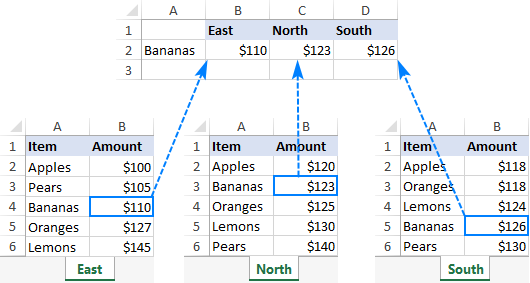

The formula searches for the value of cell A2 in 'Lookup table', sums values in columns B,C and D in the same row, and then calculates 30% of the sum. Here are a few formula examples: Operation In the same fashion, you can perform other mathematical calculations with the results returned by the VLOOKUP function.
#HOW TO USE VLOOKUP IN EXCEL 2016 ACROSS TWO WORKBOOKS HOW TO#
You can bypass this problem by using a combination of the INDEX and MATCH functions instead of SUM and VLOOKUP, and I will show you a few formula examples in the next article.ĭownload this VLOOKUP and SUM sample How to perform other calculations with Excel VLOOKUP functionĪ moment ago we discussed an example of how you can extract values from several columns in the lookup table and calculate the sum of those values. So, the more values you have in the array and the more array formulas you have in your workbook, the slower Excel works. The point is that using array formulas may adversely affect the workbook's performance since each value in the array makes a separate call of the VLOOKUP function. However, this is not the ideal solution, especially if you are working with big tables. For example, when you type a formula into one cell, Excel automatically copies it across the entire column and in this way saves you a few precious seconds :)Īs you see, using the VLOOKUP and SUM functions in Excel is easy. I find it very convenient to work with fully-functional Excel tables and their structured references. This is because I converted my data to table ( Insert tab > Table). You may be curious why the formula displays as the lookup value in the screenshot above. The solution is to use an array in the 3 rd parameter ( col_index_num) of the Excel VLOOKUP function. Now, you want to make a summary table with the total sales for each product. The source data is on the sheet named Monthly Sales: Suppose, you have a product list with sales figures for several months, a column per each month. To do this, you can use a combination of the SUM and VLOOKUP functions as demonstrated below.

If you work with numerical data in Excel, quite often you have not just to extract associated values from another table but also sum numbers in several columns or rows. Formula-free way to do vlookup in ExcelĮxcel VLOOKUP and SUM - find the sum of matching values.VLOOKUP and SUMIF - sum values that meet certain criteria.


What sort of criteria? Any : ) Starting from a number or reference to a cell containing the right value, and ending with logical operators and results returned by Excel formulas. The tasks may vary, but the essence is the same - you want to look up and sum values with one or several criteria in Excel. In this tutorial, you will find a handful of advanced formula examples that demonstrate how to use Excel's VLOOKUP and SUM or SUMIF functions to look up and sum values based on one or several criteria.Īre you trying to create a summary file in Excel that will identify all instances of one particular value, and then sum other values that are associated with those instances? Or, do you need to find all values in an array that meet the condition you specify and then sum the related values from another worksheet? Or maybe you are faced with a more concrete challenge, like looking through a table of your company invoices, identifying all invoices of a particular vendor, and then summing all the invoice values?


 0 kommentar(er)
0 kommentar(er)
